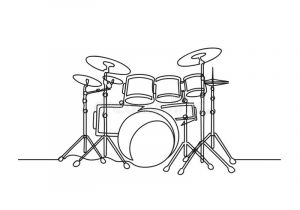Rhythm
When you choose a rhythm, this can completely alter the overall sound of your song. The rhythm is pattern of sounds and silence, as well as the beat. I like to call rhythm the “heartbeat” of a song, because it is the rhythmic pattern that is the base of the elements. All other aspects of the song must follow this pattern and rhythm, or else the musical components will be offset.
No matter what instrument is being played, the rhythm is always a key component. However, drums and bass are known as the rhythm section of a band due to the drum’s beat and the bass’s low and full-filling tones. If you are writing a song using all of the instruments in a basic band, starting the rhythm in the drums or bass will allow other instruments to add their melodic tones on top.

Choosing a tempo and rhythmic pattern that the song will follow has the power to alter the genre of a song. One element of a song that we have not examined yet is time signatures, which are the “counts” of a song. As an example, a time signature of 4/4 means that there is four beats in a measure, and is counted as: 1 2 3 4 1 2 3 4. These counts will repeat during the whole duration of a song. This is the most basic time signature, but different genres can potentially use different counts. As an example, a waltz song normally uses 3/4, which is counted as: 1 2 3 1 2 3. You can choose whichever rhythmic pattern that you think aligns with your genre, tempo, and overall feeling you want to portray.
This video from Understanding Music has a great explanation of beat and rhythm!
